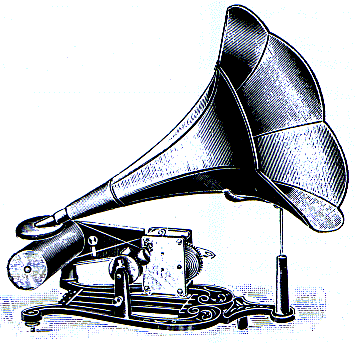A few cylinders...and a Puck for nothing !
To listen to a cylinder, take it out of its box with great care, avoiding to touch the recorded surface. This is easily done by inserting two fingers inside. Push it gently onto the mandrel as far as it can go without risk of breaking. Wind up the mechanism of your phonograph and delicately position the reproducer stylus on the first groove. Turn on the motor. If the voice seems too high or too low, adjust the speed with the small thumbwheel.
That is approximately what you could read on a phonograph's user manual around 1900 !
But since technology has slightly progressed, now you will just have to click on the cylinder you have selected...and enjoy!

 "The Puck Phonograph is probably the most inexpensive machine ever sold -when it was sold. Often it was given away as a premium with the purchase of a quantity of cylinders. The idea was that the owner would soon tire of the primitive "Puck" and invest in something better. The "Puck" was made by different factories, usually in Germany, and distributed throughout Europe under various names.
"The Puck Phonograph is probably the most inexpensive machine ever sold -when it was sold. Often it was given away as a premium with the purchase of a quantity of cylinders. The idea was that the owner would soon tire of the primitive "Puck" and invest in something better. The "Puck" was made by different factories, usually in Germany, and distributed throughout Europe under various names.
There are a number of different base designs, but the one shown above is probably the most common. The mandrel is connected to the governor pulley with a twisted loop of string. I mention this simply because many people are not aware of the twist and have trouble getting the machine to function correctly because the cylinder rotates in the wrong direction ! "
(This description is borrowed from Eric Reiss' excellent book : The Compleat Talking Machine.)
